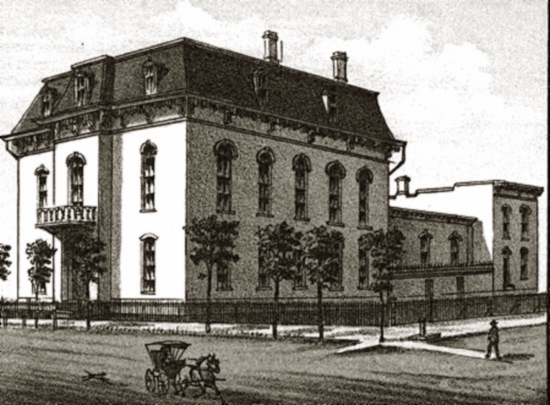
Laramie County Courthouse, Cheyenne, 1882, Northwest corner of
17th and Ferguson (now Carey).
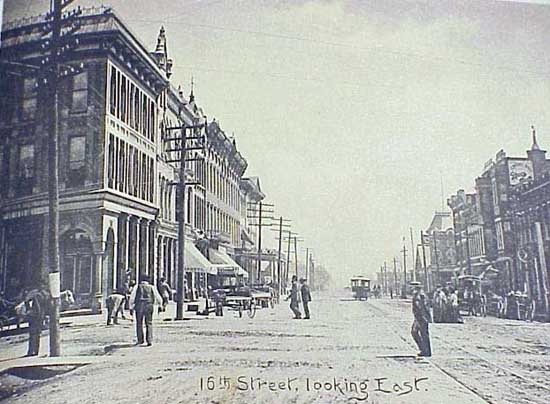
16th Street looking east from Ferguson (now Carey) toward Hill Street (now Capitol) approx. 1889. Photo by C. D. Kirkland. Note the horsetram.
On the left is the Idelman Building. Next door is the Commerical Block which was owned by F. E. Warren. The building across the street on the exteme right houses the
Senate Saloon. The Senate Saloon was a fixture in Cheyenne under a multitude of different owners from prior to 1877 until
Prohibition came in and the space was converted to a bakery. Seemingly, each new owner promised to
turn the saloon into a first class operation. Alas such plans failed. The shooting and stabbings continued. A petition was filed with
the City Council to close it down as a public nuisance. The building with the canopy at the end of the block
is the Inter-Ocean Hotel, formerly owned by Barney Ford, discussed on a subsequent page. The site is now
occupied by the Hynd's Building on the corner of 16th and Capitol. Diagonally across the street the building with an
Italianate small tower is the Burlington Station. The building was constructed in 1884 as the
Warren Emporium (see next image). Horsetrams were introduced to
Cheyenne in 1886. The company had three cars all built in Cheyenne and three lines.
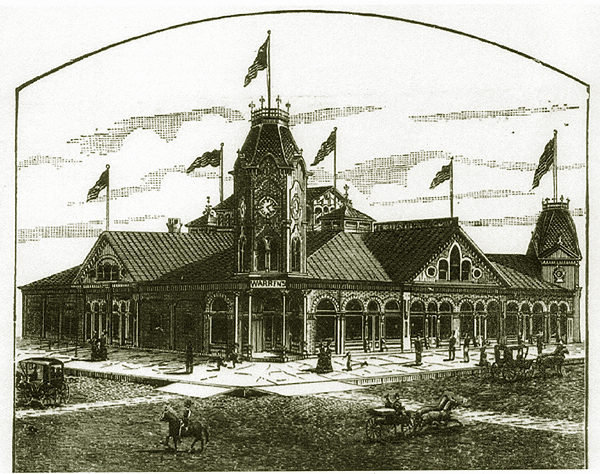
Warren Emporium, southeast corner of 16th and Hill (Present day Capitol).
The Warren Emporium was an 1884 version of an indoor shopping mall. It occupied 23,700 square feet housing some 24 stores selling furniture, musical insruments,
China, glassware and other items. Above the shoppers was an immense glass cupola rising 60 feet above the floor. Included was a
ladies lounge. Behind he shopping mall was an additional floor space of 18,000 square feet housing the offices of
F. E. Warren, the Warren Live Stock Company with fireproof vaults presumably to hold all of his money. Warren was reputedly
the wealthiest man in all of Wyoming with interests in banking, livestock, real estate, utilities, mechantile establishments. By 1887, the building was converted into
a depot for the Burlington Railroad. The bulilding was razed in the 1920's to make way for a
Mediterranean revival railway depot and a Trailways bus station, which in turn have also been torn down. The site is now
occupied by the northwest corner of Depot Plaza.
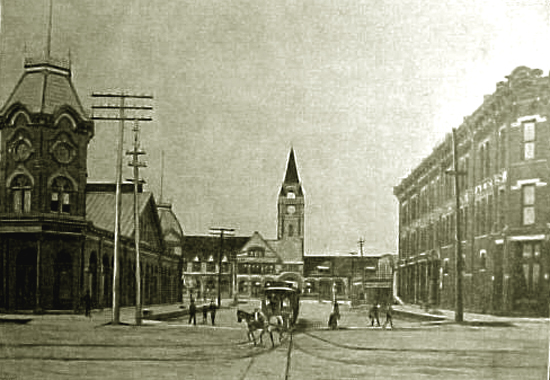
Hill Street, now Capitol Ave, looking south toward the Union Pacific Terminal, 1888. Note horsetram.
The car barn was located at Abney's Livery Stable
on 16th Street between Capitol and
present-day Central Avenue. James Clay "J. C." Abney (1836-1899, proprietor of the stable served as general
superintendent of the tram line. Abney arrived in
Cheyenne in 1867 and opened the livery with Heck Reel. By 1874, he had the contract to carry mail to
Iron Mounain. He served in the State Legislature and also as a justice-of-the-peace.
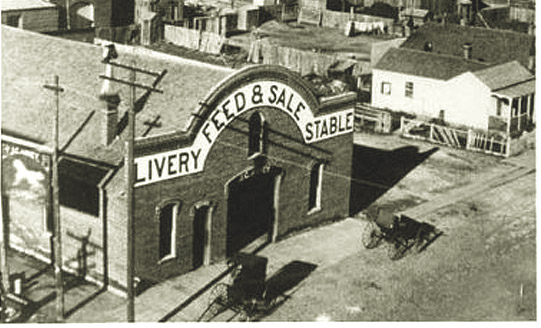
Abney's Livery Stable, 16th Street, undated.
The line lasted only six years and the company discontinued service in 1892. As discussed on a
subsequent page an electric street railway was started in 1908 and discontinued service in 1924.
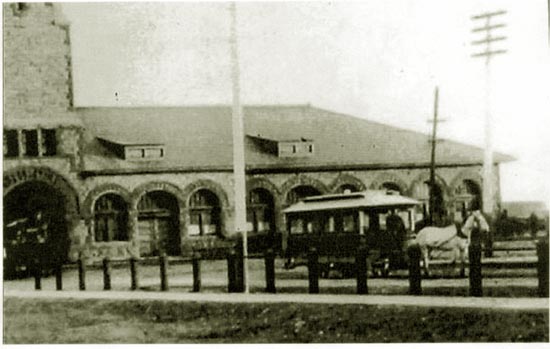
Horsetram at Union Pacific Passenger Station approx. 1890.
Besides the Inter-Ocean, other hotels
in the City included the Railroad Hotel, Dyer's Hotel, the Metropolitan, the Western Hotel, Key City House and
the Leighton House. A boarding hotel that was popular with hardened cowboys fresh from a cattle drive was the Ames, possibly because of its
rates, $7.00 a week. The proprietor was a Mormon with only one wife and quite devout. He
would kneel in prayer every evening in the lobby, next to a cage which housed a
parrot. Years later,James Peake Royston, a cowboy who rode for the Searight Cattle Co.,
described an evening when the prayers abruptly ended when
the parrot spewed forth a string of obscenities
taught to the parrot by the cowboys.
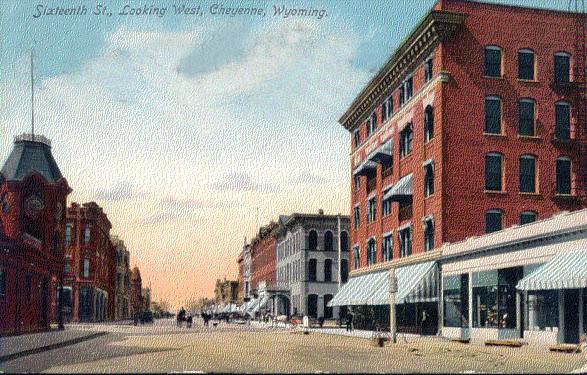
16th Street (Lincolnway), 1909, looking west at intersection with Capitol Ave.
The photograph was taken from the south side of the present location of the
Plains Hotel. Compare with photo immediately below. Five story building on right (north side of street) is First National Bank.
Across Capitol, still on north side, the gray building on the corner is the Inter-Ocean Hotel.
Ornate brick building with small tower on southeast corner (left) is Burlington Passenger Depot. On the southwest corner
is the Kelley Mercantile Co., purveyors of groceries, fruits and produce.
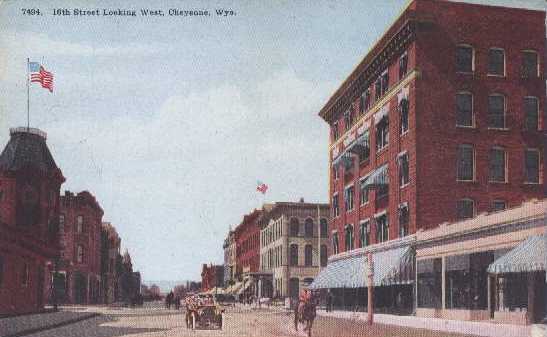
16th Street, 1910
Early photographers were not above "doctoring" earlier photos so as to make them more modern.
Compare the above photo with the one immediately preceeding. Compare the shadows of the Burlington
Depot with the shadows under the horse and car.
Cheyenne Photos continued on next page.
|
|